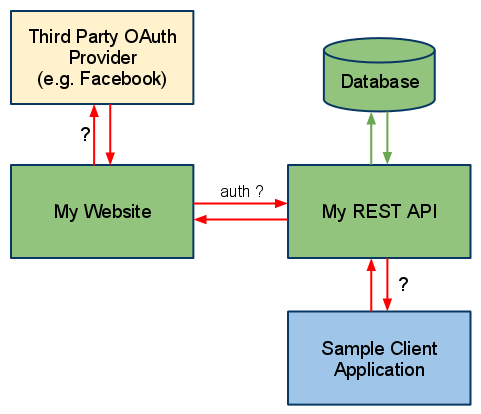

The page appears fairly simple, but it actually offers a lot to explore. Int i_age, ///< Age at time of enrollment in yrsįrom this rather minimalist description, Doxygen generates this page.
DOXYGEN REST API FULL
Student(char *i_name, ///< full name (Lastname, First, M.I Most important thing is to initialize GPA value! *! Different types of majors we have at the college */ The student object is concrete class derived from the abstractįloat GPA /**< Current Grade Point Average (GPA) */ EXTRACT_ALL=NO: Creates documentation only on explicitly commented itemsĪll you need to do to take maximum advantage of Doxygen is add short comment markers, such as /, *, !, and īrief represents a student enrolled in your college.EXTRACT_ALL=YES: Creates documentation on everything, commented or not.

You can apply two basic levels of scope to the Doxygen run: You also can direct it to write to specific places by adjusting the OUTPUT_DIRECTORY, for example: OUTPUT_DIRECTORY=D:MyProjectsfooHTML You can tame it by specifying specific regular expressions of filenames ( FILE_PATTERNS) to add or remove ( EXCLUDE_PATTERNS). By default, it wants to rip through all the files in the base directory and discover what it can. It will base its knowledge of file type on the extension of each file in the directory (.CPP for C++ and so forth). Part of the magic of Doxygen is that it has parsers built in for each of the target languages. Now, open the template.cfg file and make it point to the location of your current project: INPUT=D:MyProjectsfoo Again, if you prefer not to edit this file, you can use Doxywizard to create it based on your answers to a short questionnaire. Doxytag, a tool that allows you to integrate (point at) other HTML docs outside the domain of your own project (for example, third-party libraries), won’t be covered in this article, but it may be worth exploring.īecause you probably don’t care to write a configuration file from scratch, you can ask Doxygen to spit out a template by entering the following on the command-line: Doxygen –g template.cfgĭoxygen will produce a starting template for you. The configuration file drives everything that you do with Doxygen it is the blueprint for what you want done. However, you can get a running start by using the Doxywizard to create your initial configuration file. The main tool you will use (daily) is doxygen.exe. If you use another platform besides those, you need to grab the source for a native recompile. Start off by downloading some binaries built for your platform of choice Win32, Linux, MacOS X, and Solaris 9 are readily available. Fortunately, Doxygen supports output in Rich Text Format (RTF) PostScript, hyperlinked PDF, Latex, compressed HTML, XML, and even crusty old Unix man pages (see Figure 1). As you know, HTML isn’t the most convenient (or professional, for that matter) output stream for everyone. Most developers use Doxygen to produce HTML-based docs for public or private consumption. But, you can still do a first pass on nearly any C, C++, Java, Objective-C, IDL (CORBA or Microsoft), C#, or PHP project and get great results. Of course, the more prep you add, the better the outcome. He has shepherded the project for the past decade, producing one of the world’s most widely used documentation packagers.Īs you may have guessed, Doxygen can get started with little or no source-code preparation. How do you get your head around this thing when there’s no place to start? For this and many other scenarios, Doxygen should be part of your toolset.ĭoxygen is the brainchild of Dimitri van Heesch, who made it available under the GNU General Public License.
DOXYGEN REST API CODE
Whether you are working in C or C#, the same old bugaboo rears its ugly head: How do you keep the documentation of function parameters accurate and consistent with the actual use cases? With Doxygen, you extract the documentation directly from the sources, which makes it much easier to keep the documentation consistent with the source code.Ī perhaps worse scenario is your company purchasing some code from a third-party vendor with scanty or no documentation. In fact, if you’ve ever used the popular Qt GUI or any project created with Qt, you’ve probably browsed a Doxygen-generated HTML page.Īs soon as any small project has more than three or four programmers working on it, the need for some explanation about how the functions work arises. Whether you call them hooks, functions, entry points, subroutines, or what-have-you, the need to document them well arises simultaneously. Any successful commercial code spawns vertical applications that need bits and pieces of its API.


 0 kommentar(er)
0 kommentar(er)
